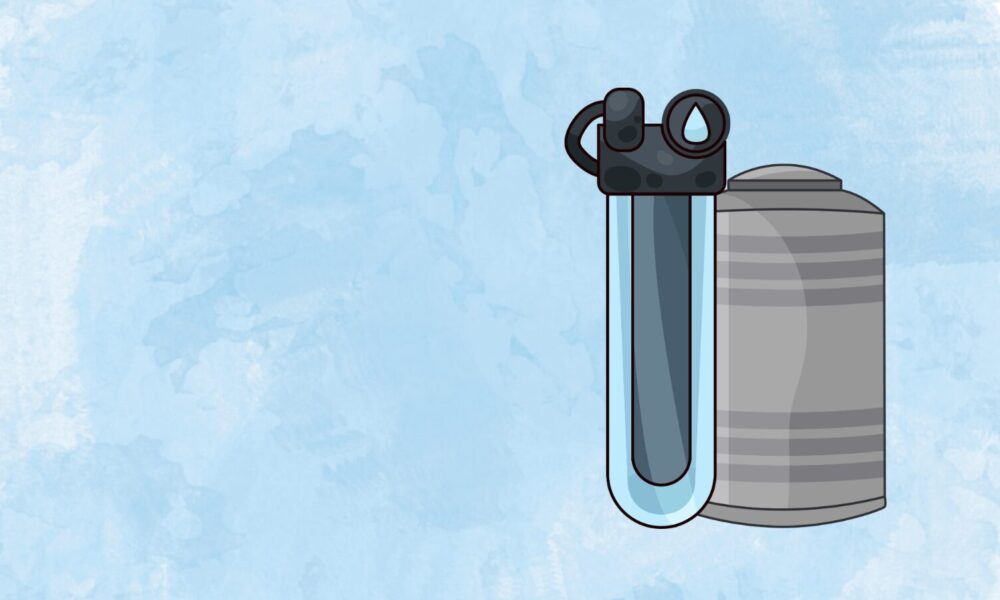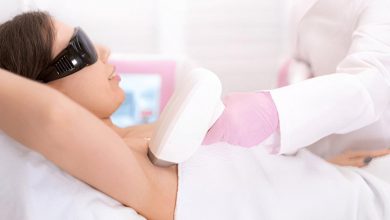5 Best Water Softeners 2025 – Durable, Cost-Effective, & Trusted


Bitter taste, white stains, worn-out appliances, and dry skin.
Hard water bears all these troubles that spread more and faster than a viral video.
You’re not the only one. In fact,
85% of U.S. homes deal with hard water! [Source: Saint Lawrence County]
The good news is that you have some solid options to fight them. The primary actor here is the Water Softener, with Conditioner as the second lead.
Then again, the market has countless products and this makes it tough to pick one.
Don’t worry, we’ve compiled the top 5 Water Softeners for you! This includes-
- SpringWell FutureSoft Conditioner,
- iSpring ED2000,
- US Water Systems Matrixx Smart, and
- SpringWell WS1.
Quick Glance At The Water Softener Options
| Brand & Model | Type | Grain Capacity | Salt Usage | Best For | Price Range |
| NJ Water Systems Water Softener | Salt-based | N/A | 37 lbs/month | Mid-sized homes | $$ |
| SpringWell FutureSoft Water Conditioner | Salt-free | N/A | N/A | Eco-conscious | $$$ |
| iSpring ED2000 Electronic Water Descaler | Salt-free | 25+ GPG | N/A | Rental homes, big families | $$$ |
| US Water Systems Matrixx Smart Metered | Salt-based | 70,000 grains | 42 lbs/month | High-demand use | $$$$ |
| SpringWell WS1 | Salt-based | 48,000 grains | 40 lbs/month | Well water | $$$ |
Top 5 Water Softener Systems in 2025: Our Review
1. Best Overall Water Softener – NJ Water Systems Water Softener

A powerhouse for mid-sized homes with super hard water.
The device ensures washing away more than 5 problems caused by hard water. It prevents scale deposits, hydrates skin, smoothens hair, improves lather, and stops white spots.
They typically come with demand-initiated regeneration. So, it can save both water and salt, making it super effective.
It’s slightly easy to install. Even if you can’t, their customer support is incredible. Just call them and they’ll do it for free.
Key Features
- Perfect for mid-sized homes
- Efficient salt usage saves money
- Eco-friendly operation
Pros
- Great performance
- Easy to use
Cons
- Not for big families and industrial use
2. Best Salt-Free Water Softener – SpringWell FutureSoft Water Conditioner
One of the best eco-friendly options!
This water conditioner doesn’t use salt. Instead, it uses the TAC method to crystalize minerals and reduce scale buildup.
No salt means less hassle and no wastewater.
It’s easy to install and requires almost no upkeep.
Although not a full softener, you can consider it for light hard water issues. It handles hard water measuring around 3.5 GPG more efficiently.
Key Features
- Proprietary FutureSoft media
- Interior tank design
- No electricity required
Pros
- Eco-conscious
- Hassle-free
Cons
- Not as effective as salt-based ones
3. Best Budget Water Softener – iSpring ED2000 Electronic Water Descaler
On a budget? Try this one.
The device uses electromagnetic waves and alters the mineral properties. This helps prevent scale deposits without dealing with salt.
It’s super easy to set up.
The efficiency is incredible, even for big families with high water demand.
Key Features
- Electromagnetic method
- No plumbing modifications required
- Works well for big families and rental properties
Pros
- Cost-effective
- Straightforward setup
Cons
- Not suitable for very hard water.
4. Best High-Efficiency Water Softener – US Water Systems Matrixx Smart Metered
The device stands out with its flood prevention ability.
The main focus is that it helps protect homes from hard water damage during power outages.
This benefit comes from a 9-volt battery backup. It keeps time and prevents the softener from running water when there’s no electricity.
The device also has a grain capacity and a smart-metered control system. This helps save both water and energy.
The best part is that it’s Bluetooth-compatible, that allows for one-touch programming.
Key Features
- 9-volt battery backup
- 48,000-grain capacity
- Bluetooth-compatible
Pros
- Saves water and salt
- The smart system makes it convenient to use
Cons
- Requires pro help for setup
5. Best Water Softener for Well Water – SpringWell WS1
Rely on well water? Then this water softener is for you.
It effectively removes high levels of sulfur, iron, and manganese.
The device combines air injection oxidation (AIO) and greensand. It’s a smart trick to convert dissolved minerals into solids and filter them out.
This softener can remove up to 8 PPM of minerals, based on the type.
It can soften even very hard water and remove odor and bad taste.
Key Features
- Smart technology
- Filters up to 8PPM minerals
- Chemical-free system
Pros
- Effective for different types of minerals
- Removes bad smell and taste
Cons
- Uses a bit of salt
What is a Water Softener?
It’s an ion-exchange system.
A Water Softener is a water treatment technology. The device uses salt-coated resin beads to trap the minerals, remove them, and soften water.
These beads carry out an ion exchange system in which-
- The salt-coated beads have a negative ion
- Minerals like calcium and magnesium have a positive ion
When hard water flows through the softener, the beads attract the minerals and swap them with salts. Sodium and potassium, particularly. This helps soften the water.
With such a process, the water softener addresses 5 problems the hard water brings.
- Scale deposits
- Cleaning inefficiency
- Dry skin
- Rough hair
- White spots
Water Hardness Level
Water hardness is measured in either GPG or mg/L.
- GPG measures how many grains of dissolved minerals are in a gallon of water.
- Milligrams per liter measure how many milligrams of minerals are in one liter of water.
The Water Quality Association has classified the level into 5 categories. It looks something like this-
| Classification | GPG | mg/L |
| Soft water | 0 to 1 | 0 to 17.1 |
| Slightly hard | 1 to 3.5 | 17.1 to 60 |
| Moderately hard | 3.5 to 7 | 60 to 120 |
| Hard | 7 to 10.5 | 120 to 180 |
| Very hard | 10.5+ | 180+ |
This shows the water stays soft as long as it’s under 1 GPG and anything over 1.5 to 10.5+ is hard water.
Hard Water vs. Soft Water
| Factor | Hard Water | Soft Water |
| Minerals | 1.5 to 10.5+ GPG | 0 to 1 GPG |
| Appliance Lifespan | Corrosion and a shorter lifespan | No Corrosion and Extended lifespan |
| Cleaning Efficacy | Less efficient with soap | Lathers well and cleans efficiently |
| Skin Health | Cause dryness | Gentler on skin |
| Hair Health | Rough, frizzy shaft | Smooth hair |
| Environmental impact | Increases soap use, more waste | Reduces soap use, more eco-friendly |
| Upkeep | High | Low |
| Taste | Bitter, chalk-like | Soft, smooth |
| Smell | Rotten egg | Neutral |
Signs You Need a Water Softener
Scale Buildup
Heavy use of hard water results in limescale buildup.
When water collects minerals, the substances pile up and bring about scale deposits. They stick to appliances and plumbing systems such as pipes, dishwashers, heaters, and washing machines.
Once amassed, the minerals cause issues like clogging, reduced water flow, corrosion, damage, and high energy costs.
Cleaning Inefficiency
Cleaning products typically contain long fatty acids. This includes soaps, detergents, and shampoos.
Such chemicals react with minerals in water and create a filmy residue called “soap scum”.
This residue lowers the power of those products and results in less lather. For this, you end up using more products than needed.
Dry Skin
Your skin starts to become dry.
This happens because calcium and magnesium strip away natural oils from your skin. It leads to flakiness and dryness.
Besides, extremely hard water can worsen your state of skin condition. Studies say it increases the risk of psoriasis by up to 20%. This can result in itching and irritation.
So, avoid hard water with 3.5+ GPG if you have dry skin, sensitivity, or severe skin conditions.
Rough Hair
Hard water makes the hair feel dull and rough.
The minerals stick to the shaft and cause buildup around it. This reduces the tensile strength of the hair. As a result, your hair becomes frizzy, harder to manage, brittle, and breakable.
On top of that, hard water affects your shampoo’s functions too.
The minerals react with surfactants that most shampoos have and reduce the product’s efficiency. It leaves a coating film on your hair and makes the strands look dull.
This shows that shampooing your hair with hard water does more harm than good.
White Stains
When hard water dries and evaporates, it leaves minerals as a white, chalky residue.
The stains are visible on surfaces like pipes, glasses, faucets, dishes, and wall panels.
This increases the hassle since you have to put extra effort into cleaning them. It means more usage of- water, detergents, and energy.
How Does A Water Softener Work?
A water softener uses a groundbreaking technology called the ion exchange process. The resin beads in the water softener tank do the job.
It involves 3 stages.
Water Softener Process Step By Step
Step 1: Hard Water Flows In
Hard water moves from your main water supply. It gets into the water softener’s tank called the “mineral tank”.
This tank is full of tiny resin beads. They come coated in salt ions. It can be sodium or potassium salt.
Step 2: Ion Exchange
The salt-coated beads carry a negative charge while minerals have positive ions.
So, when hard water moves through the beads, they attract the minerals, trap them, and swap the minerals with salts. That’s the ion exchange process.
Step 3: Soft Water Comes Out
The salts help remove all the minerals, turning the water soft down to 1 GPG.
Once softened, the water flows out of the faucet and is ready for use.
Regeneration Cycles
Resin beads have to work hard to trap minerals. However, over time, they collect lots of calcium and magnesium and start piling them.
Eventually, they stop working properly.
For this, there’s a regeneration system. It uses salt dissolved in water or “brine”.
The brine helps clean minerals off the beads to recharge them. This sums up the regeneration cycle.
It involves 4 stages.
Stage 1: Backwash Phase
The water flow is reversed at first. Typically, the normal direction is- moving to the resin bed from the top and down through the beads.
In the backwash phase, the water flows backward through the bed. It helps loosen the minerals and debris buildup and move them away.
The dirty water goes out of the system.
Stage 2: Brine Draw Phase
In this phase, the water softener gets the brine solution ready.
The water flows into a separate tank in the softener that holds the salt. It creates a saltwater solution.
The solution flows into the tank where resin beads sit. When the brine passes through the beads, it removes the minerals.
The brine replaces mineral ions stuck to the beads with its salt ions. This helps clean and recharge the resin beads.
The loose minerals flow with the impure water and exit through the drain.
Stage 3: Rinse Phase
The water softener then starts rinsing everything. This includes leftover brine and minerals.
Eventually, freshwater flows through the resin bed, washing the residue away.
The beads become clean again and get ready to soften the water.
Stage 4: Refill Phase
The refill stage preps the system for the next regeneration cycle.
Fresh water is added to the brine tank. This water blends with the salt to create a new brine solution.
This is like a new supply of brine so you use it for future regeneration phases.
Salt-Based vs. Salt-Free Softeners
Salt-Free Softeners
The main focus of ion exchange is salt.
However, some individuals on a low-sodium diet may want to avoid such softeners. It’s because the salts stay in the water after it softens.
For such a target group, there’s a water conditioner. It’s a salt-free water softener.
Water conditioners are typically formulations that use varying technologies to soften water.
They don’t replace or remove minerals like the salt-based water softeners. Instead, the conditioners alter the chemical structure and physical properties.
This helps neutralize the minerals and lower their negative impacts.
Such systems use technologies like-
Template-Assisted Crystallization (TAC)- Helps minerals form tiny crystals through beads. The crystals float in water rather than sticking to surfaces. This lowers the scope of scale deposits.
Electromagnetic Method: Uses electromagnetic fields to alter mineral charges. That way, they don’t stick together and cause deposits.
Between these two, TAC works most effectively. Experts highlight that-
“TAC typically shows consistent scale reduction over 88%.” Hence, it can be an efficient method.
However, the conditioners don’t completely remove minerals.
So, they aren’t suitable for homes with extremely hard water since their presence can still cause buildup.
Salt-Based vs. Salt-Free Softeners Comparison Table
| Factor | Water Softener | Water Conditioner |
| Mechanism | Removes minerals | Alters minerals’ behavior |
| Method | Ion exchange | TAC or electromagnetic fields |
| Upkeep | Requires periodic salt refills and component replacement | Little to no maintenance |
| Environmental Impact | Produces brine waste | Eco-friendly |
| Effectiveness Against Scale | Completely prevents scale buildup | May not work under extremely hard water |
| Soap Lathering & Cleaning | Great improvement | No significant improvement |
| Health Effects | May increase sodium levels in water | Lingering of minerals can cause some specific health issues |
| Usage | Areas with hard water issues | Mild hardness and scaling |
| Initial Cost | $500 – $2,500 | $400 – $1,500 |
| Installation Costs | $300 – $1,000 | $150 – $800 |
Salt-Based Water Softeners Pros and Cons
| Pros | Cons |
| Effective mineral removal | Regular maintenance |
| Prevents scale buildup and corrosion | Increased sodium levels in water |
| Improved soap efficiency | Environmental concerns |
Salt-Free Water Softeners Pros and Cons
| Pros | Cons |
| Low upkeep | May not prevent scale buildup |
| Environment friendly | Less effective in preventing soap scum |
| Retains beneficial minerals | Not suitable for homes with extremely hard water |
How Did We Choose the Best Water Softener Systems of 2025?
Efficiency
It means how well the water softener works.
You want to look at its grain capacity. This shows how much hardness the device can handle and how much salt it uses.
High efficiency means you save money in the long run and get better water quality.
Regeneration Technology
Such a tech affects how often the system cleans itself.
Time-based systems regenerate on a schedule, whereas demand-initiated systems work only when needed.
Typically, the latter is better because it saves water and salt more than the other.
Installation and Maintenance
Think about how easy it is to set up and maintain the system.
Some models are DIY-friendly, and some need an expert. The less the hassle, the more the convenience.
Certifications
The softener should have certifications like NSF or WQA.
These labels mean the product went through rigorous testing to meet safety and performance standards.
Customer Reviews and Reliability
Check out what others say about the product. 5 positive reviews against 1 negative is a good ratio to judge.
If several people have positive feedback, it means the product is likable.
How to Choose the Right Water Softener for Your Home?
Test your water
Check how hard your water is.
You can use DIY water test kits like strips or drops for the job.
If the results are inconsistent, call experts.
Calculate Household Water Use
Estimate how much water your family uses daily.
A rule of thumb is around 80-100 gallons per person. [Source: USGS]
Salt-based vs. Salt-Free
Settle on whether you want salt or no salt.
Salt-free is low-maintenance and great for those on a low-sodium diet. Then again, if you have extremely hard water, you need salt to remove the minerals.
Maintenance & Installation Costs
Check how much it’ll cost to install and maintain the unit.
Many service providers do it for free, which is good. Just look for those companies.
When it comes to upkeep, salt-free ones don’t require any.
If it’s salt-based, there’s a cost for refilling salts and replacing parts.
Look for Certifications & Warranties
Always ensure the products come with certifications and warranties.
The certification ensures the product is safe and effective. Meanwhile, a good warranty gives you extra peace of mind.
Get an Affordable Water Softener – Request a Free Quote Today!
Wondering how much water softener installation costs? A quality system can save you money by preventing scale buildup, extending appliance life, and reducing plumbing repairs. At NJ Water Systems, we offer affordable pricing, expert installation, and customized solutions for your home. Get a free quote and start saving today!
📍 Visit us or schedule your free water test now!
Maps Embed Link
Installation & Maintenance Guide
DIY vs. Professional Installation
Installing yourself can save money. However, some of you may find it tricky.
Wrong setups can cause severe errors and lead to product inefficiency, water waste, and energy waste.
In that case, hiring a pro will be the best thing to do. They ensure everything’s done right.
Upkeep Tips
- Take a look at the softener once in a while. Look for leaks, strange noises, or any abnormality in functions.
- Inspect the water every 6-12 months to know whether your water is soft.
- Ensure the water softener salt tank is at least half full at all times.
- Refill the salt every 1-3 months, depending on the water use and hardness level.
- Use evaporated salt, solar, or rock salt as they work better because of their purity. Among them, evaporated salt is the purest.
- Clean the tank once or twice a year to remove the brine impurities and buildup.
- Replace resin beads every 10 to 15 years
Benefits of Using a Water Softener
- Extends the Lifespan of Appliances
- Reduces Energy Bills
- Improves Skin & Hair Health
- Eco-Friendly Benefits
Common Myths & Misconceptions
“Water softeners make the water unhealthy to drink.”
No. Water softener prevents health impacts that hard water brings- like Psoriasis, Kidney Stones, Atopic Dermatitis, Diabetes, and Alzheimer’s Disease.
“Salt-free softeners are the same as traditional softeners.”
No. Salt-free softeners use TAC or electromagnetic fields to change mineral behavior and reduce their negative effects. Meanwhile, traditional softeners remove minerals and replace them with salts.
“Softened water is too salty.”
The salt content is minimal. So, it’s not very salty.
However, some individuals with taste sensitivity may find softened water salty.
Get the Best Water Softener for Your Home!



